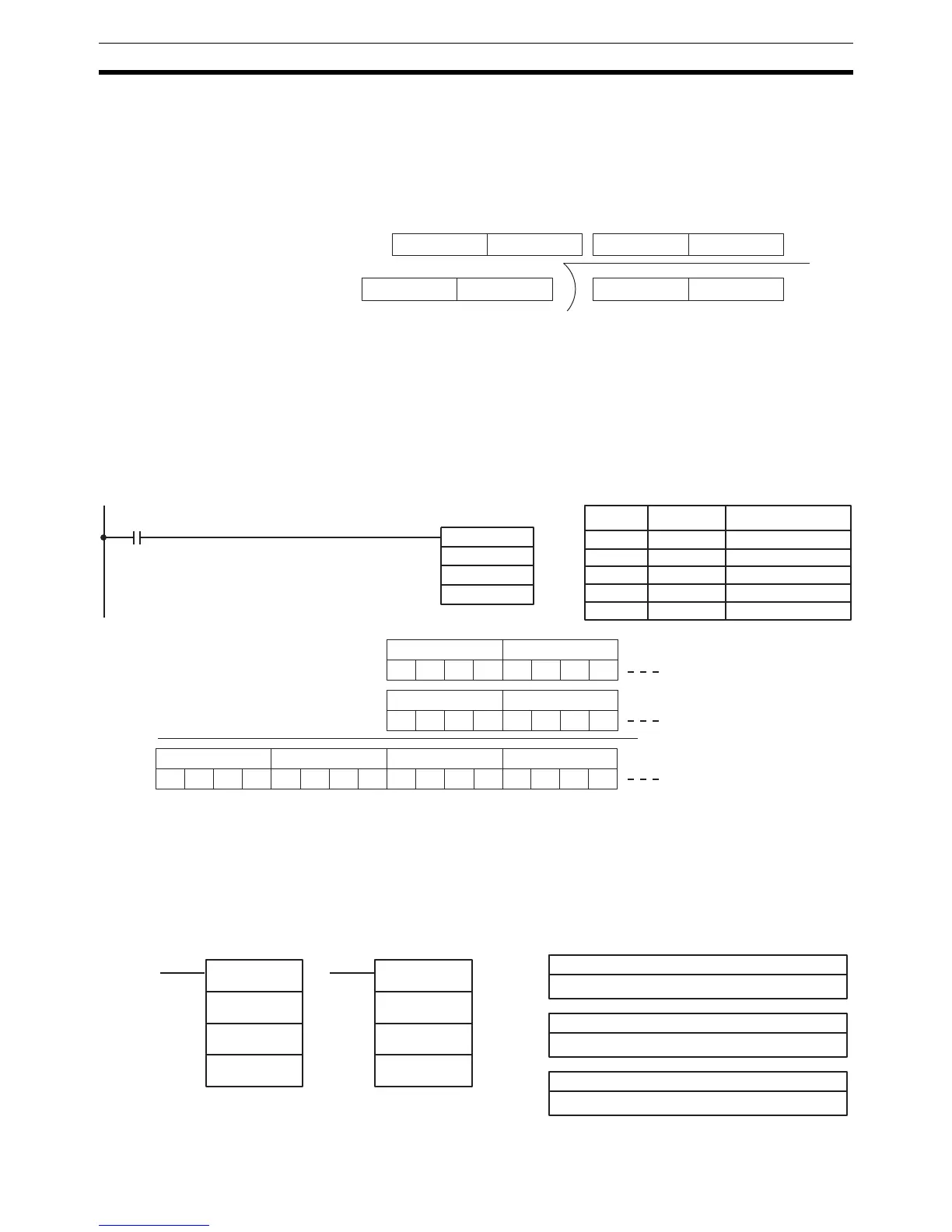338
Special Math Instructions Section 5-23
Description DBS(––) divides the 32-bit (8-digit) signed binary data in Dd+1 and Dd by the
32-bit signed binary data in Dr+1 and Dr, and outputs the 16-digit signed
binary result to R+3 through R. The quotient is placed in R+1 and R, and the
remainder is placed in R+3 and R+2.
Note Refer to 1-7 Calculating with Signed Binary Data for more details.
Flags ER: Dr+1 and Dr contain 0.
Indirectly addressed EM/DM word is non-existent.
(Content of *EM/*DM word is not BCD, or the EM/DM area boundary
has been exceeded.)
EQ: ON when the content of R+1 and R (the quotient) is 0, otherwise OFF.
Example In the following example, DBSL(––) is used to divide the signed binary con-
tents of IR 101 and IR 100 with the signed binary contents of DM 0021 and
DM 0020 and output the result to LR 24 through LR 01.
5-23 Special Math Instructions
5-23-1 FIND MAXIMUM – MAX(––)
R+1 R
Quotient Remainder
Dd+1 DdDr+1 Dr
R+3 R+2
DBSL(−−)
100
DM 0020
LR 01
Address Instruction Operands
00000 LD 00000
00001 DBSL(−− )
100
DM 0020
LR 21
00000
B15 C
001 A
DF7 0FFF A
(–8,736,420)
(26)
(–336,016 and –4/26)
FF7 A
000 0
FFF CFFF F
Remainder (–4) Quotient (–336)
÷
Dd+1: IR 101 Dd: IR 100
Dr+1: DM 0021 Dr: DM 0020
R: LR 01R+1: LR 02R+2: LR 03R+3: LR 04
R
1
: First word in range
IR, SR, AR, DM, EM, HR, TIM/CNT, LR
C: Control data
IR, SR, AR, DM, EM, HR, TIM/CNT, LR, #
Ladder Symbols Operand Data Areas
@MAX(−− )
C
R
1
D
D: Destination word
IR, SR, AR, DM, EM, HR, LR
MAX(−− )
C
R
1
D

